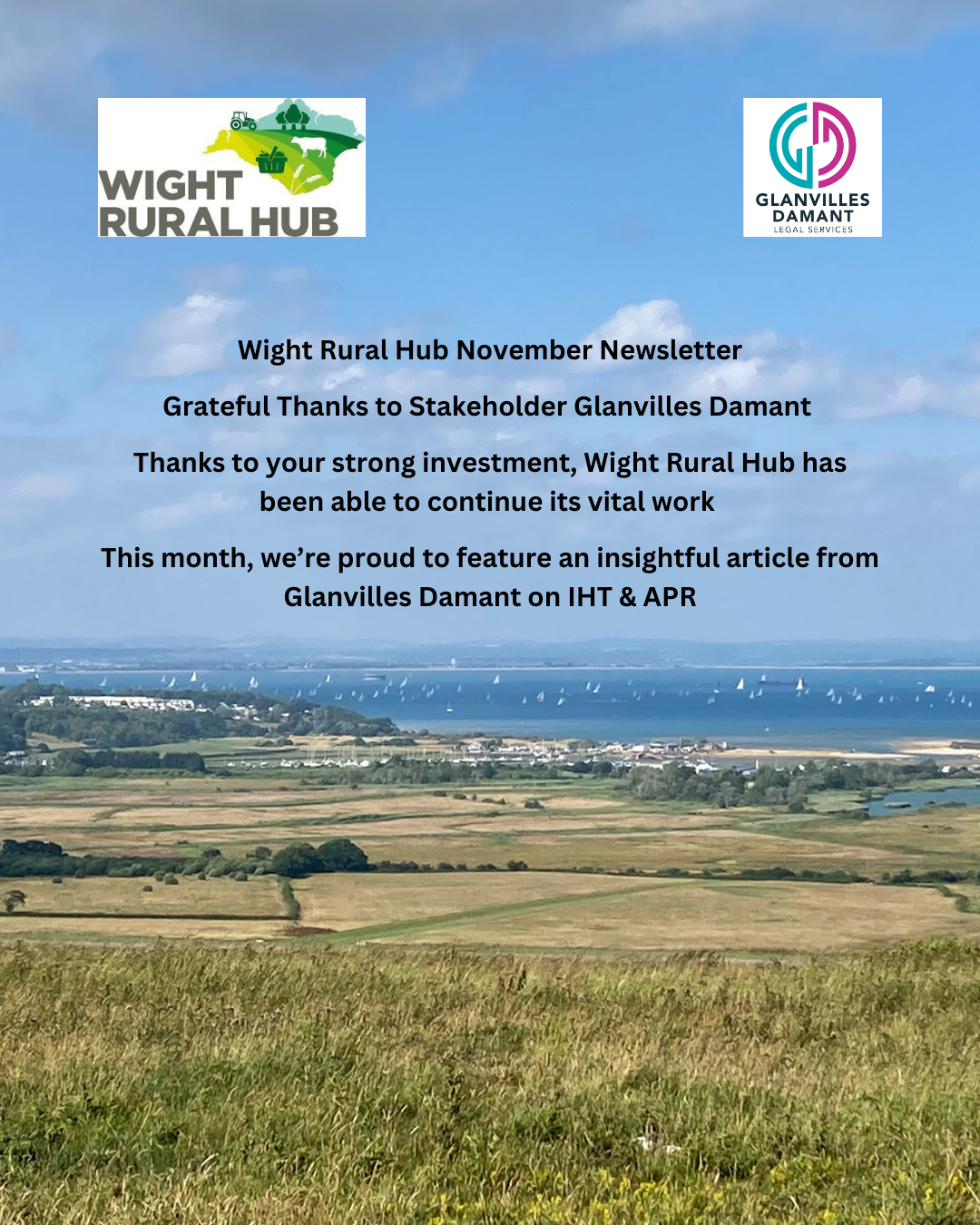Inheritance Tax and Agricultural Property Relief (APR): What Farmers Need to Know
Why It Matters
Family farms face serious inheritance tax (IHT) risks. A person’s Estate is, subject to available exemptions and reliefs, taxed a 40%. The exemptions are limited to £325,000 per person (transferable between married couples) and potential a residence allowance of £175,000 per person (also transferable) if the estate on death has a value of below £2 million (which most farms exceed). Therefore, even modest farms can trigger large tax bills when the value of land, buildings, machinery, and stock are added together on death. Without careful planning, this could force the sale of all or part of the farm to pay IHT, threatening the farm’s future.
Agricultural Property Relief (APR) and Business Property Relief (BPR) have historically reduced or eliminated these tax bills, keeping farms in the family. But proposed changes could cap reliefs at £1 million per person, and reducing the balance of the relief to 50%. Most medium-sized farms could easily exceed the £1 million threshold, leaving large portions taxable at 20% (i.e. 50% of 40%). This cap is NOT transferable!
Eligibility for APR
APR applies to agricultural property used for farming purposes, including:
- Farmland and pasture
- Traditional farm buildings
- Cottages linked to farm operations
- Farmhouses that are “character-appropriate” and integral to the business
To qualify for 100% APR:
- Owner-occupied farmland must have been used for at least 2 years
- Let farmland must have been used for at least 7 years
Mistakes in occupation or tenancy periods are a common reason claims fail.
Business Property Relief (BPR)
Where APR does not apply, BPR may still provide up to 100% relief for:
• Machinery and equipment
• Livestock
• Trading elements of diversified farms (e.g., contracting, farm shops and even solar farms if only an element of a larger farming operation)
BPR does not cover businesses which are mostly investment-based so diversification into solar, holiday-lets, glamping and the like must be structured carefully to protect the relief (even if now limited). .
Common Pitfalls
Even with APR and BPR, farms can lose relief if they:
- Do not structure wills or ownership arrangements correctly, resulting in lost allowances. In particular, couples may fail to maximise the future £2 million APR/BPR potential, leaving significant tax payable.
- Fail to have clear partnership agreements or ownership records, making it unclear who owns what, which can complicate claims and succession planning.
- Use land for non-agricultural purposes (e.g., leisure, equestrian, glamping) that disqualifies APR. The test for BPR is much more difficult to satisfy as HMRC often focus on profit and we all know that making a profit from farming (even with some diversification) is not easy.
- Own large or modern farmhouses disconnected from daily farming operations.
- Transfer assets to someone not continuing the farming activity.
- Rely on old tenancies, which may only qualify for 50% APR.
With the proposed £1 million cap on APR/BPR, careful planning is more important than ever to ensure that couples and families maximise the reliefs available under current and future rules.
The farm you worked hard to build may no longer pass tax-free to the next generation. Even if APR and BPR currently apply, the cap and RNRB restrictions mean now is the time to review wills, tenancy agreements, and succession plans with your adviser.
This article was written by claudia.roberts@gdlegalservices.co.uk
NB Articles are written independently of the Wight Rural Hub
